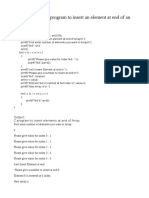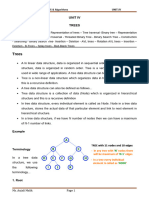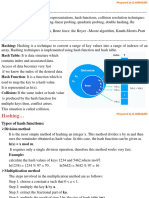0% found this document useful (0 votes)
197 views24 pagesAlgorithms and Data Structures: Priority Queue
This document covers priority queues and their implementations. It discusses naive implementations using unsorted and sorted sequences. It then describes binary heaps, which support all priority queue operations in O(log n) time. Binary heaps can be represented compactly as a complete binary tree using an array. The key operations are inserting an element by adding it to the bottom and bubbling it up, finding the minimum element at the root, and deleting the minimum by replacing it with the last element and bubbling it down. Constructing a priority queue from a sequence of elements can be done in O(n) time by building the heap bottom-up. Binomial heaps are also introduced as an extended priority queue structure.
Uploaded by
Kushal RajputCopyright
© © All Rights Reserved
We take content rights seriously. If you suspect this is your content, claim it here.
Available Formats
Download as PDF, TXT or read online on Scribd
0% found this document useful (0 votes)
197 views24 pagesAlgorithms and Data Structures: Priority Queue
This document covers priority queues and their implementations. It discusses naive implementations using unsorted and sorted sequences. It then describes binary heaps, which support all priority queue operations in O(log n) time. Binary heaps can be represented compactly as a complete binary tree using an array. The key operations are inserting an element by adding it to the bottom and bubbling it up, finding the minimum element at the root, and deleting the minimum by replacing it with the last element and bubbling it down. Constructing a priority queue from a sequence of elements can be done in O(n) time by building the heap bottom-up. Binomial heaps are also introduced as an extended priority queue structure.
Uploaded by
Kushal RajputCopyright
© © All Rights Reserved
We take content rights seriously. If you suspect this is your content, claim it here.
Available Formats
Download as PDF, TXT or read online on Scribd
/ 24





























































































